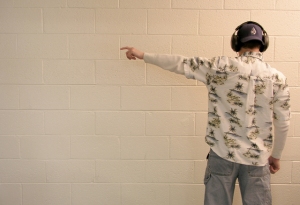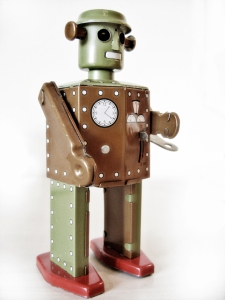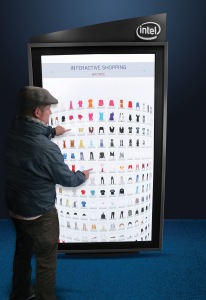 In the latest of my occasional store analysis outings in association with Shoppertrak, I visit one of my old haunts in London, checking on the some of the huge hi-fi and technology stores in the capital’s main street for technology addicts to see if their stores are as cutting edge as their products. I include some independent stores as well as one that would probably be familiar to everyone. The results surprised me and point to a number of areas where some old fashioned personal service wouldn’t go amiss amongst all the impressive gadgetry.
In the latest of my occasional store analysis outings in association with Shoppertrak, I visit one of my old haunts in London, checking on the some of the huge hi-fi and technology stores in the capital’s main street for technology addicts to see if their stores are as cutting edge as their products. I include some independent stores as well as one that would probably be familiar to everyone. The results surprised me and point to a number of areas where some old fashioned personal service wouldn’t go amiss amongst all the impressive gadgetry.
Whilst visiting most of the major mobile phone retailers in Tottenham Court Road in preparation for my last Undercover Analyst post, I found myself drawn into a trip down memory lane as I eyed some of the older technology stores in the area.
As I said in my previous post, back in the 90s if you wanted the latest slab of shiny consumer technology there really was no better place to come. I was a frequent visitor. In fact it was only a few years ago that I switched from a TV I bought there 25 years ago, and that was only because of the digital switchover. I like to get value for money out of my purchases!
Everything had changed of course, as you’d expect in the world of modern gadgetry, but many of the stores had a familiar layout and a good deal of the sales pitch was pretty much the same as it had been in the days of tower systems and VHS.
Having just taken notes on some of the most cutting edge gizmo stores on the market, I thought it would be good to see how the more traditional technology retailers were doing, if there is such a thing as ‘traditional’ technology.
The first store I visited store predominantly sold Hi-Fi gear. I’m not sure if calling it that is now an anachronism, but I enquired about a sound system anyway. The sales adviser seemed very knowledgeable and had an impressive amount of product knowledge to call on. Buoyed by this initial encounter, I asked if I could perhaps have a demo of the system and the salesman’s face lit up. All I had to do, he explained, was to visit their demo area on the third floor where someone would be happy to help me.
Missing Link
This is where the experience took a disappointing nose dive. I wasn’t escorted to the demo area, I was just told where it was. This seemed like serious missing link in the service chain to me. Most stores, most notably the large supermarkets, now train their staff to take anyone who enquires about a product to where they can find it. Just sending someone risks that person not finding it or changing their mind in transit. It also gives a rather offhand impression of the service model.
 Just pointing someone in the general direction is acting like a signpost. Leading someone to the product is a positive interaction with the customer and keeps them engaged. Moreover, in this case I was supposedly interested in an expensive sound system, not a bogoff on a tin of baked beans. It could have been a very costly mistake for this store. My maxim to staff is always ‘guide, don’t point’.
Just pointing someone in the general direction is acting like a signpost. Leading someone to the product is a positive interaction with the customer and keeps them engaged. Moreover, in this case I was supposedly interested in an expensive sound system, not a bogoff on a tin of baked beans. It could have been a very costly mistake for this store. My maxim to staff is always ‘guide, don’t point’.
Once on the third floor it took a while to catch the eye of the assistant, who apparently had no idea I was on my way. Even a phone call from the ground floor warning them of my impending arrival was clearly too much to ask. A totally cack-handed way to operate a sales handover in my opinion, and something they really should work on.
The demo itself went well and I felt the adviser really knew his stuff. But the way I’d had to pretty much drive the process to get there myself left me feeling disengaged by this point. I think, had I been a real customer I might not even had got that far.
Overall though, not a bad store, but some serious service issues to deal with.
ShopperTrak says – How are customers moving around the store? Gaining an understanding of how shoppers are moving around the store can help to ensure that shoppers don’t miss out on any stock as well as making the most of product placement.
I.e. retailers may find that customers are regularly coming in to the store to purchase small items such as headphones but that they are experiencing a high abandonment rate once shoppers realise that these items are located on the third floor. By moving headphones to the till area, the retailer may see a boost in conversion rates.
Retailers can also look to data to monitor the success rate of implementing new changes, i.e. staff radios. I.e. did conversion go up when staff began using radios to communicate across different floors? They can then tweak these changes accordingly.
My next visit was to a well known electronics supplier. This store sells a variety of less well known brands but is a seriously great place to come for anything from a walkie-talkie to a GPS enabled swizzle stick. I have to admit I could, and probably have, spent hours browsing amazing gadgets that I’d never heard of whilst desperately trying to find a justification for buying. Luckily for my bank balance I usually fail.
Plain Vanilla
Having said that, it’s a bit plain vanilla in terms of shop layout and fit-out. It looks like the store was built around off-the-shelf shop fittings bought in a clearance warehouse at the end of the 1990s. I’m sure that wasn’t the case, but it was not exactly what you’d called ‘retail theatre’. Slightly incongruous for a shop selling up-to-the-minute products, but maybe they think the merchandise is exciting enough.
 The stock displays were neat enough and everything was easy to browse. Staff were around and someone from the back of the store shouted across to me to ask if I needed any help.
The stock displays were neat enough and everything was easy to browse. Staff were around and someone from the back of the store shouted across to me to ask if I needed any help.
To me that’s an approach that’s about as contemporary as the shelving was in the store. If you’re going to engage with a customer, do it face to face and with some commitment. Throwing your voice across the shop is also throwing away a golden opportunity to turn that interaction into a sales opportunity. In many respects it would be better to say nothing than do that. Having come from several stores with a much more focussed customer service ethos, even though it was probably poorly executed in some cases, this seemed like a bit of a throw-back.
Again not a bad store overall, but still lacking that certain something.
My final visit was to a store that today stands pretty much unchallenged in the landscape of UK technology retail today. It’s my policy in these articles not to name stores, but I’m sure it won’t take too much of a leap of imagination to work out the name. It houses a number of concessions and has a wide range of different brands on offer. Indeed it recently merged with another equally ubiquitous high street retailer.
There were a lot of staff about, but oddly many of them appeared to be cleaning staff. They were adorned with Hi-Viz jackets and were busy with cleaning tools. It seemed to me to be an odd time to be cleaning as the store was fairly full of potential customers. I’m assuming it was an outsourced company, but if it had been my store I wouldn’t have wanted to see them on the shop floor during trading hours.
There were numerous sales staff floating about, but it was difficult to get their attention. One of them seemed to deliberately avoid my gaze. I have to say I’ve had this experience in the past in these stores, and it was a behaviour they were at one time famous for. I understood it had been ‘trained-out’ of staff after an extensive re-branding effort a few years ago. Maybe this guy had missed the seminar.
Technical Problems
Many of the products on sale had a demo facility, which was a great idea, except for the fact that most of them appeared not to be working that day. When I finally did manage to capture a member of staff they explained that they’d been having technical problems, so perhaps I just picked the wrong time. Once we did get some of the demonstrations going they were generally a good sales tool.
I must admit I wasn’t particularly impressed after my visit and did notice a customer satisfaction button by the door on the way out. I’ve noticed these are becoming more popular now in larger chain stores, although I suspect the data they provide will be about as qualitative as badly implemented footfall counters. On this occasion it was placed slightly behind the door so I’m not sure many customers would have seen it anyway. Perhaps an indication that the store staff were not particularly keen to see them use it.
I’d previously seen improvements in this company’s customer service performance so it was a surprise to see they’d started to slip back into their old ways. Perhaps having less competition leads to complacency.
ShopperTrak says:
• It would be interesting to use heat maps or beacons to map out key areas and understand which concessions are drawing in shoppers. By doing so, retailers can gain insights into the customer journey and how shoppers are moving around the store, as well as store layout, staff allocation etc.
• An understanding of your busiest periods means that retailers can use their least busy times to carry out staff training and cleaning for example.
So there you have it. Smart gizmos not always being sold in a particularly smart way, which considering we’re talking about highly advanced products seems something of an irony.
I was at a conference a few months ago where the concept of robot salespeople was being pitched. It’s not as outlandish as you might think either. These robo-shop-assistants were based on a Japanese designed personal helper droids intended as home help for infirm people. Apparently they cost around a thousand dollars and are easily re-tasked to the world of retail. Maybe we’ll see these in our high street stores in years to come, and I think it would be a good bet that the first place would be in a technology store.
I’m not sure if that says more about retailers than it does about the evolution of artificial intelligence. But as I saw on my travels around mechanical Mecca, there may well come a time when it will be difficult to tell which gadgets are for sale and which are doing the selling. In some instances I don’t think that would be a bad thing.
For more information and insights from Shoppertrak, click the logo below and subscribe to my blog for future posts from The Undercover Analyst. I could be coming to your store soon!















